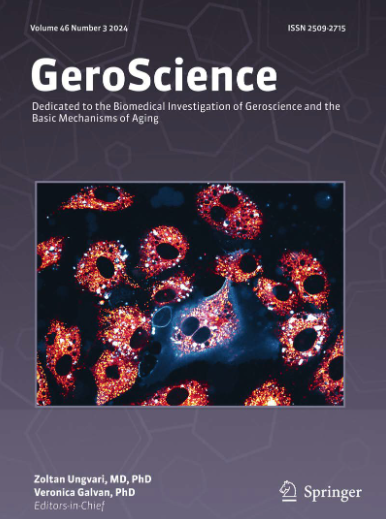脊柱增强术治疗老年椎体骨折。
IF 5.4
2区 医学
Q1 GERIATRICS & GERONTOLOGY
引用次数: 0
摘要
骨质疏松性椎体骨折(OVBFs)在美国老年人群中是一种非常普遍的病理,可导致身高下降和后凸畸形。虽然经皮后凸成形术(PKP)和椎体成形术(PVP)等微创手术技术是常用的,但这些技术在老年人中的疗效尚不清楚。通过检查现有的证据,我们的目标是在适当的证据分级的背景下评估这些程序的有效性。本文通过检索多个数据库,包括有关老年患者椎体隆胸手术的文章,进行了叙述性综述。然后根据牛津循证医学中心(ocbm)的概述,对文章的证据水平进行分级。文献表明,这两种手术对高龄患者通常是安全的,可以可靠和持续地减轻疼痛,并且可以通过多种辅助/围手术期护理选择来增强。除了使用右美托咪定或联合使用贝磺酸雷马唑仑和舒芬太尼镇痛药外,这些措施还包括椎弓根螺钉固定或不融合、术中注射利多卡因、直立者脊柱平面阻滞和康复措施。这两种手术最可怕的并发症是骨水泥外渗和再骨折,这在PKP后更容易发生。这两种方法都证明了在解剖矫正领域的有效性。PKP和PVP似乎可以安全地恢复老年患者的生活质量,但必须用更高水平的证据来探索每种手术的细节,以解释并发症和护理选择的潜在差异。本文章由计算机程序翻译,如有差异,请以英文原文为准。
Spinal augmentation for vertebral body fractures in the elderly population.
Osteoporotic vertebral body fractures (OVBFs) are a highly prevalent pathology in the United States elderly population and can result in height loss and kyphotic deformity. While minimally invasive surgical techniques such as percutaneous kyphoplasty (PKP) and vertebroplasty (PVP) are commonly used, the efficacy of these techniques in older individuals is unknown. By examining the current body of evidence, we aim to assess the efficacy of these procedures within the context of appropriate grading of levels of evidence. This narrative review was conducted by searching multiple databases, including articles pertaining to vertebral augmentation procedures in elderly patients. Articles were then graded for levels of evidence, as outlined by the Oxford Centre for Evidence-Based Medicine (OCEBM). Literature suggests that both procedures are generally safe in advanced-age patients, can reliably and sustainably decrease pain, and may be augmented with a multitude of adjunctive/perioperative care options. Such efforts include pedicle screw fixation with or without fusion, intraoperative lidocaine injection, erector spinae plane block, and rehabilitation efforts, in addition to the use of dexmedetomidine or the combined use of remimazolam besylate and sufentanil analgesics. The most dreaded complications of both procedures are bone cement extravasation and refracture, which likely occur more frequently after PKP. Both procedures have demonstrated efficacy in the domain of anatomical correction. PKP and PVP appear to safely restore quality of life in elderly patients, yet the finer details of each procedure must be explored with higher levels of evidence to account for potential differences in complication profiles and care options.
求助全文
通过发布文献求助,成功后即可免费获取论文全文。
去求助
来源期刊

GeroScience
Medicine-Complementary and Alternative Medicine
CiteScore
10.50
自引率
5.40%
发文量
182
期刊介绍:
GeroScience is a bi-monthly, international, peer-reviewed journal that publishes articles related to research in the biology of aging and research on biomedical applications that impact aging. The scope of articles to be considered include evolutionary biology, biophysics, genetics, genomics, proteomics, molecular biology, cell biology, biochemistry, endocrinology, immunology, physiology, pharmacology, neuroscience, and psychology.
 求助内容:
求助内容: 应助结果提醒方式:
应助结果提醒方式:


